New Moon Rugs was founded by renowned handmade carpet expert John Kurtz in 1993 at what was then the dawn of the modern carpet revolution centred on Nepal. Since its inception New Moon has possessed a truly remarkable and unwavering commitment to quality carpet making using the best materials so the best craftsman and weavers can turn the best, err we won’t say best, but unique and bold designs into the distinctive and easily recognizable carpets that comprise the New Moon oeuvre.
Alluding to capital ‘A’ art is not a clever marketing ploy however as Mr. Kurtz is a versed painter who trained at the Pennsylvania Academy of the Fine Arts and the Accademia di Belle Arti in Florence, before venturing into a career in collecting and appreciating beautiful and beautifully made objects including, of course, handmade rugs and carpets. This appreciation of what is in essence the ‘craftsman ideal’ guided him in opting to make only the best carpets, described in New Moon’s own words as possessing ‘The New Moon Difference’.
In November of 2016 we caught up with John Kurtz, his daughter Erika Kurtz, and Erika’s adorable six-month old daughter Izzy in Patan and Kathmandu in Nepal. Erika – who now runs the business as John is in active retirement – was more than happy to explain and illustrate first hand what constitutes this much touted difference as we all toured the various facilities used to produce New Moon carpets. From initial inspiration to final show presentation, follow along as we examine ‘Camara’ by New Moon which debuts during DOMOTEX in Hannover, Germany the 14-17 January 2017.
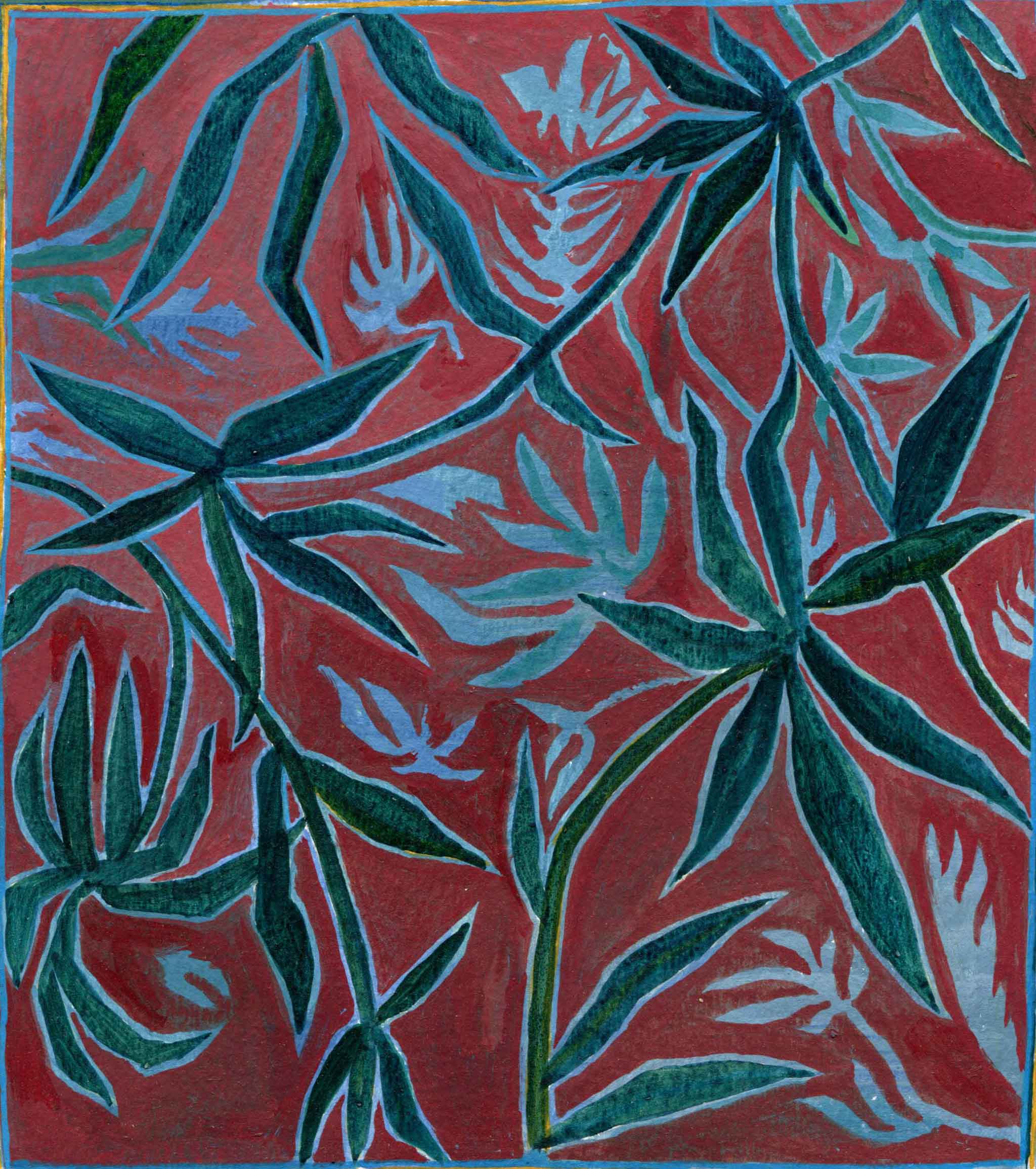
Outspoken as The Ruggist may be regarding the some of the individual merits of New Moon’s methodologies, today we choose not to enter into lengthy discussions of crossed versus uncrossed weaving nor ‘How much?’ hand has to remain in handmade, but rather simply present ‘The New Moon Difference’ as a statement of fact. New Moon carpets are made in a manner which chooses no compromises when it comes to their notion of an ideal carpet. They have resisted larger market forces to make a less expensive more commodity driven product, in its stead making carpets in the grand tradition and manner of carpets from those early days of the modern carpet revolution.
Now as it was then, a design of John’s such as ‘Camara’ starts as a painting. Much can be said for the amazing so-called painterly carpets of Fort Street Studio or the new carpets in Jan Kath‘s ‘Heiter bis Wolkig’ Collection, but just as those carpets reflect a certain style of painting, so too do the carpets of New Moon reflect another. In the case of a New Moon design, the brush adds not necessarily realism or beautifully subtle shading, but rather an interpretative eye and the imperfection of a less meticulous attention to fine details. This ‘artifact of the hand’ as we’ll call it is what the state of rug technology was when New Moon was launched and it continues to serve them well today.
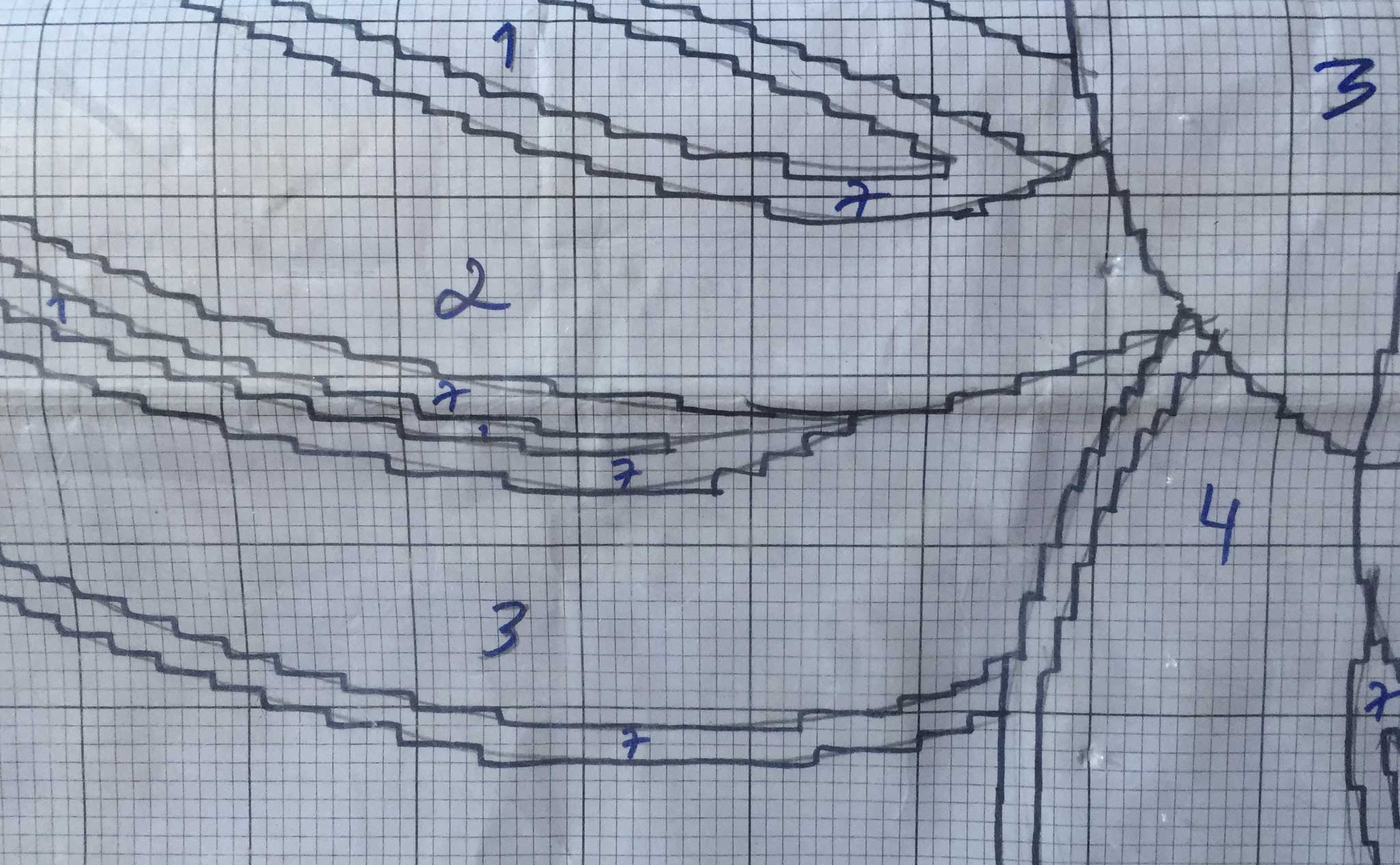
Another artifact of the hand, or if you’d rather vestige of a nearly bygone era is hand draw graphs of the carpet design. Graphs, as you may know, are a knot by knot guide used by the weavers as they are weaving the carpet, with each square on the graph representing one knot in the carpet. In the above image you can see the original analog design drawn in pencil overlaid with the knotting guide – dare I say digitized or pixelated – in marker. As the decision to include or exclude a square remains at the discretion of the grapher this produces variability between graphs even of the same carpet in the same size. These small differences, which we have discussed at length in ‘Authentically Kooches‘ in reference to another great carpet maker, are what differentiates each New Moon carpet from the next.
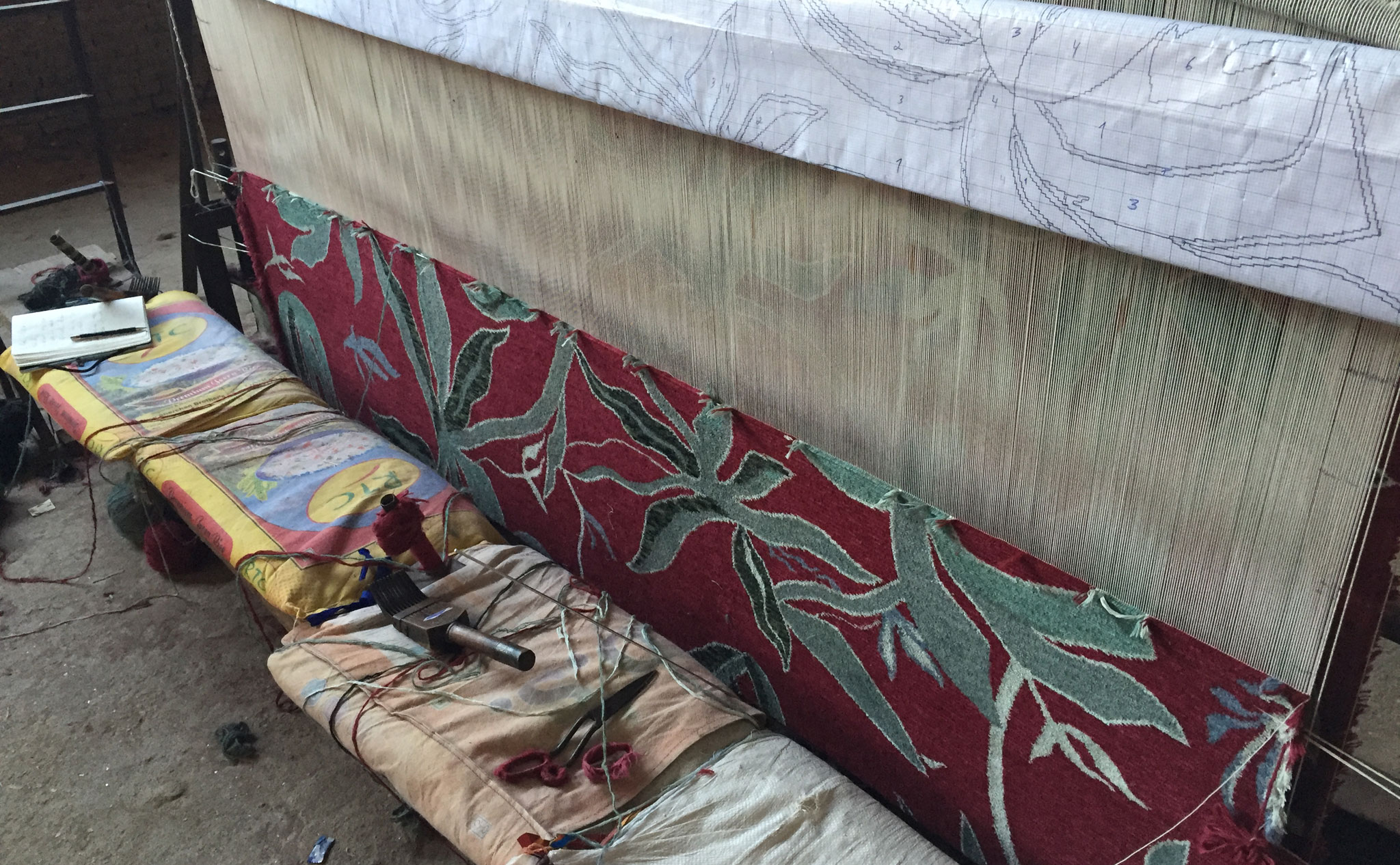
Weaving on the other hand is no vestige or remnant, rather an integral component of all of this. Any of the Kurtzes will espouse the merits of a crossed woven carpet, insofar as to argue uncrossed doesn’t even count as weaving, or so I would gather from many impassioned conversations with Erika and John over the years. I am even willing to bet little Izzy’s first word will be ‘crossed’. All joking aside, this crossed woven method of construction (Read all about it here!) is increasingly rare in Nepali carpet production which many, myself included, consider to be a shame. As a result however, New Moon’s utilization of crossed weaving still lends that distinctive blanket-like handle which first accompanied the original rise to prominence of Nepali made Tibetan Weave carpets.
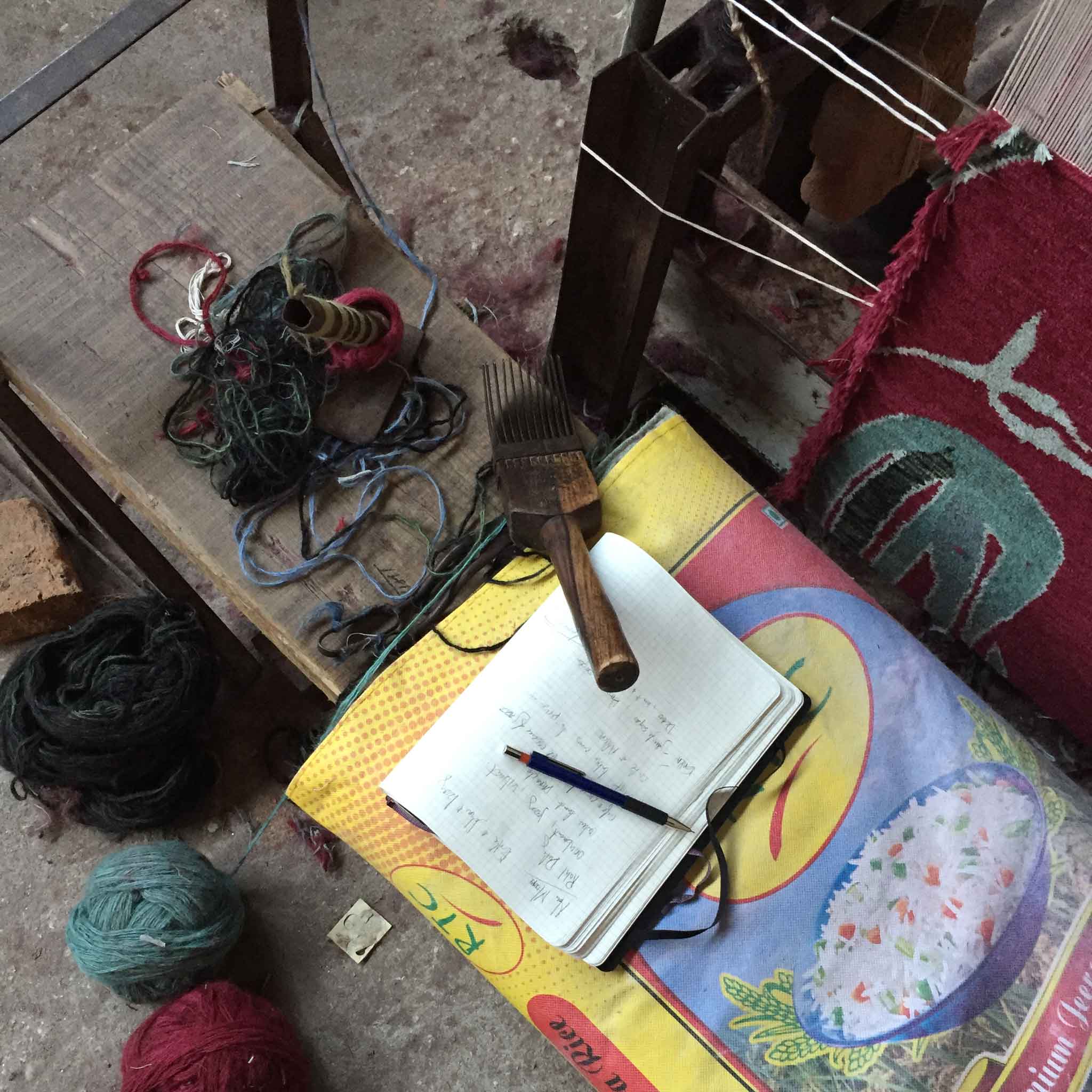
Hand-carded, hand spun woollen yarn is another component of the New Moon Difference, though it is worth noting there are still other makers using this and many of the same techniques as New Moon. This does not mean New Moon is disingenuous regarding their ‘difference’ of course, simply among like and exceptional company, but I digress. The hand processing of raw wool into yarn and then batch dyeing imbues the finished yarn with wonderfully nuanced and sophisticated colour. Sophisticated in this case meaning an innate appreciation of colour variation and imperfection, intentionally planned as it may be by the design of the process. A further labour intensive step of tweeding plys of different colours together ‘enhances’, in New Moon’s own words, the nuance of colour in the majority of their carpets.
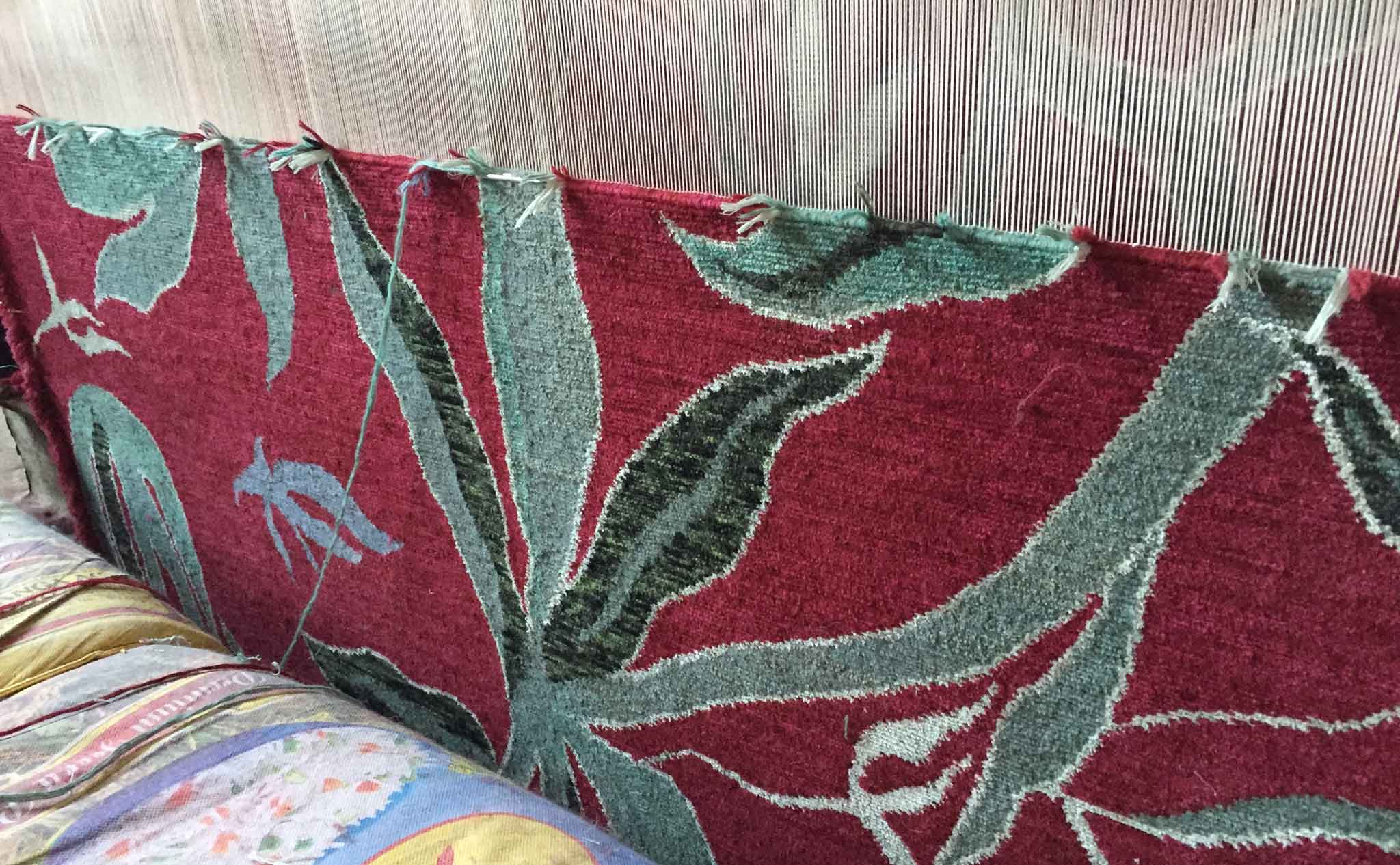
As we tour the weaving shed… . It should be noted that ‘shed’ in this case in not used in the suburban lawnmower storage sense, but in the properly defined manner meaning ‘a simple roofed structure, typically made of wood or metal, used as a storage space, a shelter for animals, or a workshop’ not dissimilar to a shipbuilding shed. It’s the proper term, and as such we choose not to dress it up solely for clever marketing purposes, much the same way New Moon does not dress up or exaggerate the number of knots per square inch in their carpets.
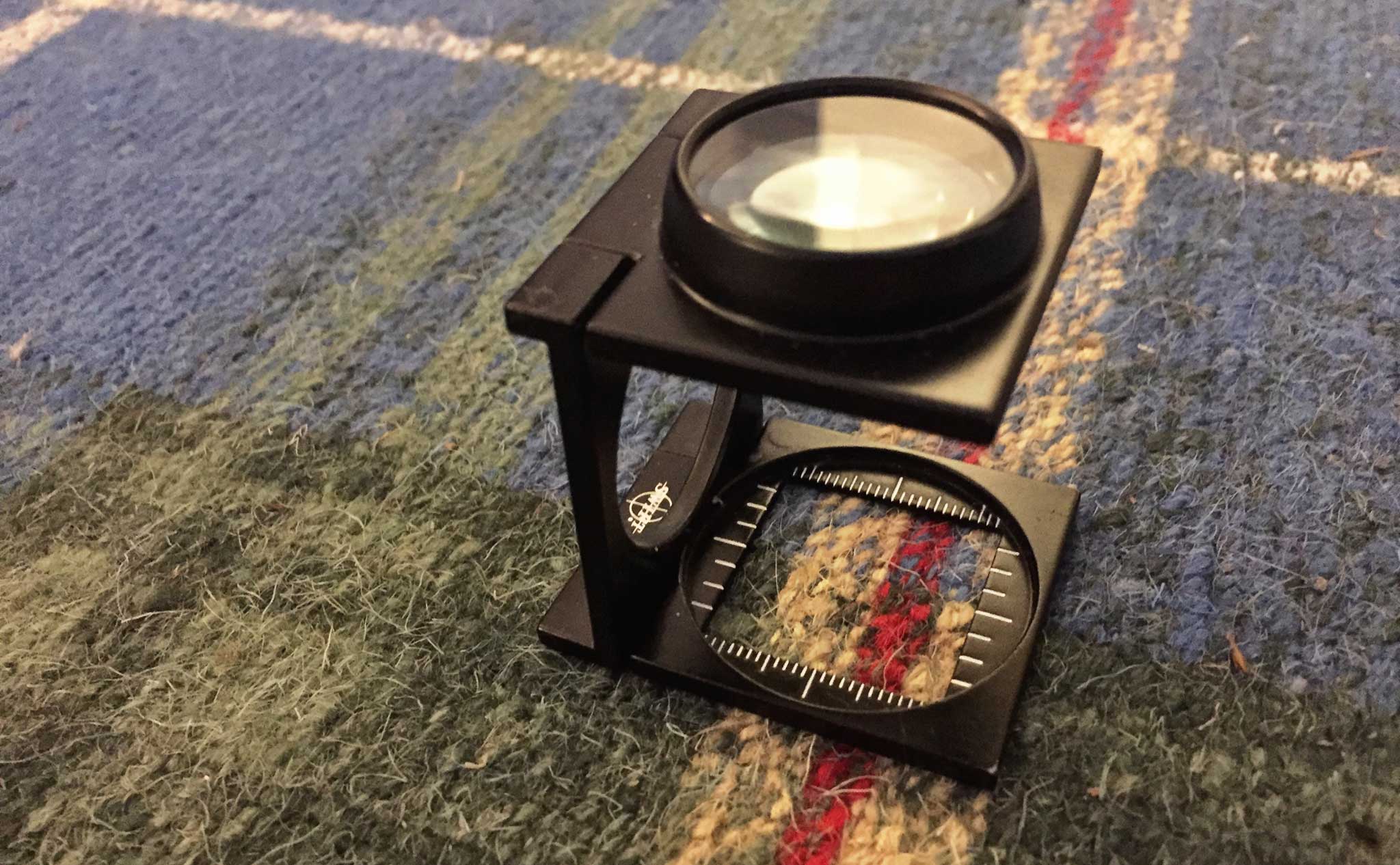
A 100 knot carpet from New Moon has 100 knots per square inch whereas much of industry produces so-called 100 knot carpets with an actual count approximating 80 knots per square inch. While this is used in their marketing it is also a matter of fact easily verified by simply counting the number of knots in one of their carpets and comparing it to some of their more disingenuous competitors.
To the trade: When examining a carpet – one you are of course purchasing from a reputable dealer – follow the mantra of ‘Trust, but verify.’ when engaged in conversation regarding the specifics of the carpet at hand. If a dealer presents a carpet as having 100 knots per square inch, he or she should have no problem with you actually counting the knots. If they resist, consider purchasing your carpet elsewhere.
As we prepare to venture onward in our tour Erika comments on ‘Camara’s styling describing it as a bit of a ‘jungle theme with happy pops of colour, a bit of an [Art] Deco vibe’ before John continues ‘It’s less formal, more exuberant, vibrant, and jazzy with a certain french panache reminiscent of sitting in a café w/cigarette… the real essence of Jazz… African themes come to Paris.’
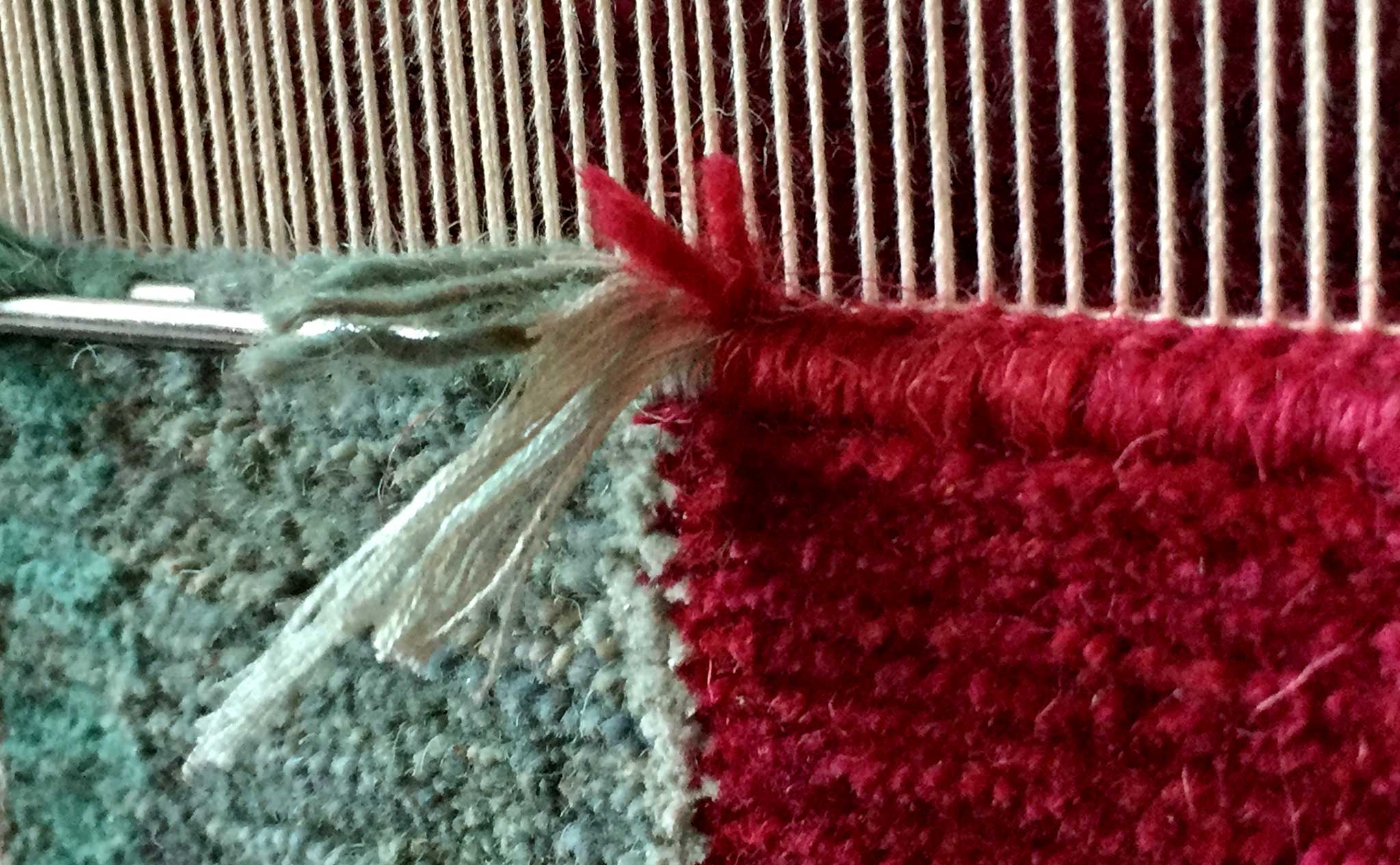
One final and related note on the differences in a New Moon carpet would be that of density of packing. Without revealing too much detail – at the request of New Moon – suffice it to say New Moon utilizes several techniques to ensure not only the knot count density is correct, but also that each row of knots (as shown in detail above) is firmly packed into place, again to quote ‘in order to strengthen the rug and offer the durability necessary for it to last generations.’
‘Camara’ is just one of the many New Moon carpets with a difference that will be shown during DOMOTEX in Hannover, Germany the 14-17 January 2017. New Moon can be found in Hall 17, Stand 44/2 opposite the Carpet Design Awards exhibit. If you’ve enjoyed this inspirational peek at ‘Camara’ join me in visiting New Moon during the fair and seeing the carpet – now complete – as it is presented for the first time. For those not attending the fair, or for those seriously curious, a preview image of a smaller version of ‘Camara’ is available for viewing below. Enjoy!
[wc_accordion collapse=”1″ leaveopen=”0″ layout=”box”]
[wc_accordion_section title=”Click Here to see ‘Camara’ in colour ‘Oxblood’ by New Moon”]
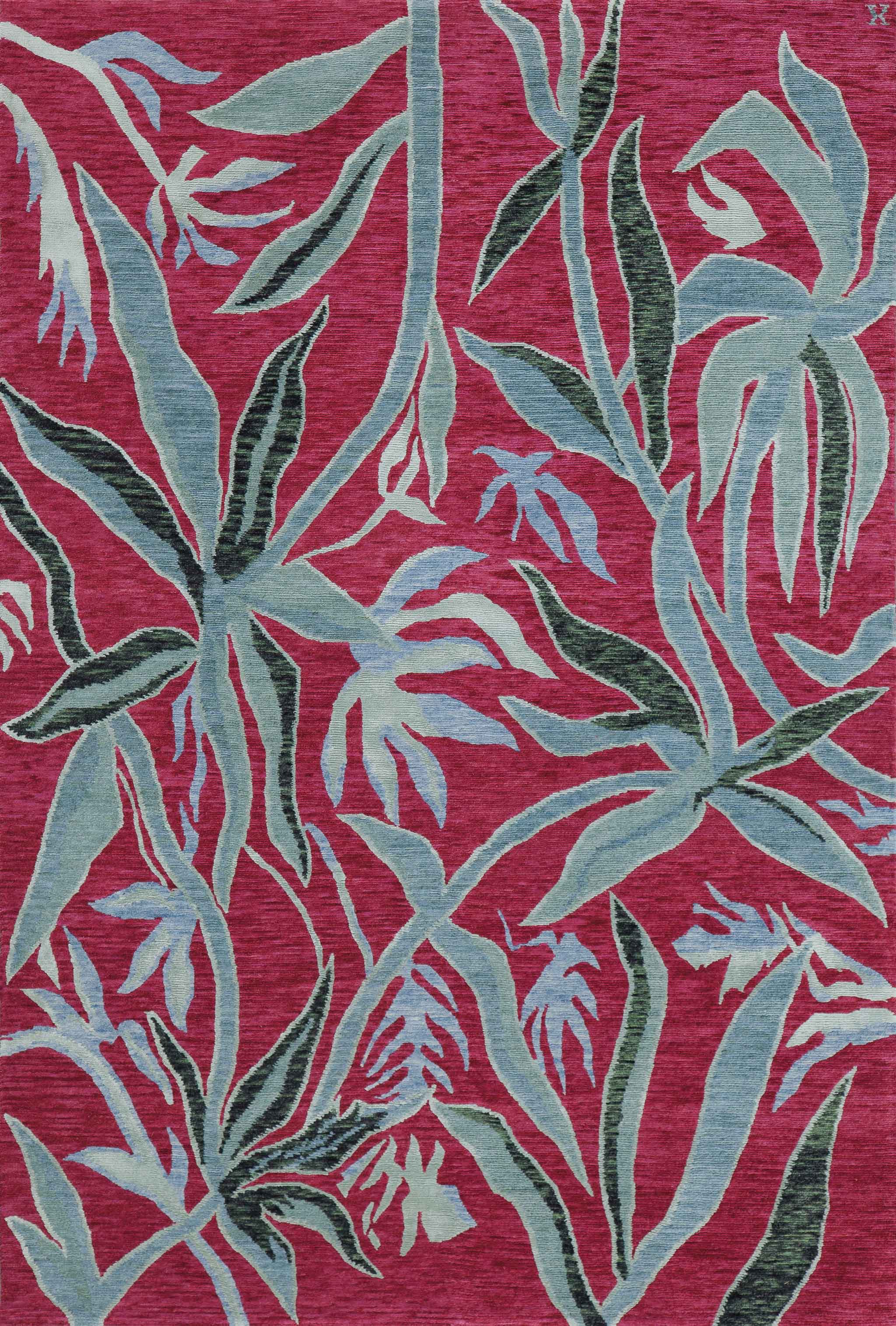
[/wc_accordion_section]
[/wc_accordion]



